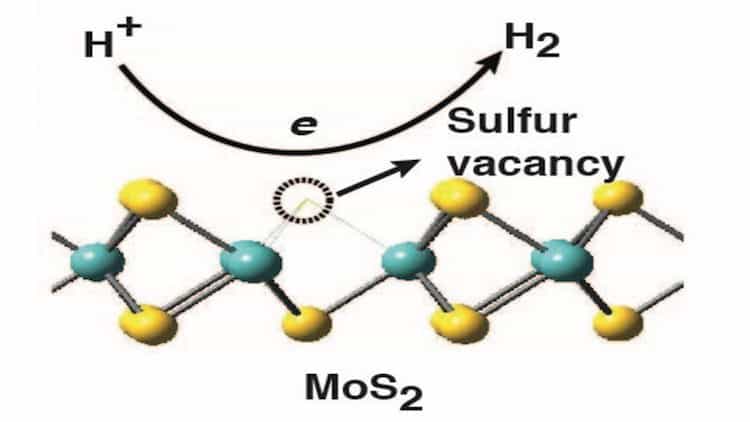Hydrogen production given an edge by molybdenum sulphide

Researchers have found that molybdenum sulphide (MoS2) could be a more productive as a catalyst for hydrogen production than previously thought.

The researchers from North Carolina State University, Duke University, NC and Brookhaven National Laboratory, NY found that the entire surface of MoS2 can be used as a catalyst, not just the edges of the material.
“The key finding here is that the intrinsic catalytic performance of MoS2 is much better than the research community thought,” said Linyou Cao, an associate professor of materials science and engineering at NC State and senior author of a paper describing the work. “We’re optimistic that this can be a step toward making hydrogen a larger part of our energy portfolio.”
Hydrogen can be produced from water in a process called hydrogen evolution, which involves the use of an expensive platinum catalyst. Another candidate for a hydrogen evolution catalyst is MoS2, which is inexpensive and abundant but long thought of limited utility because it was believed that the edges of MoS2 act as catalysts, leaving the bulk of the material inactive.
Register now to continue reading
Thanks for visiting The Engineer. You’ve now reached your monthly limit of news stories. Register for free to unlock unlimited access to all of our news coverage, as well as premium content including opinion, in-depth features and special reports.
Benefits of registering
-
In-depth insights and coverage of key emerging trends
-
Unrestricted access to special reports throughout the year
-
Daily technology news delivered straight to your inbox










INWED Engineering Profile: Naval Architect Ellie Driver
Not a woman I´d want to cross … oh, that was Elle Driver